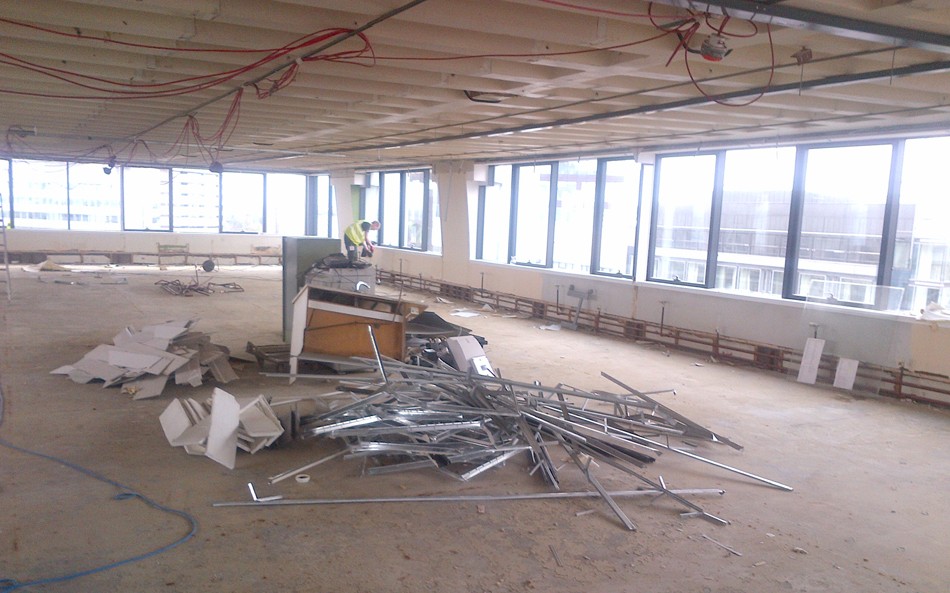Whether you are considering renting out a property to potential tenants and you are looking at all the relevant documentation you will soon be dealing with, or you are a tenant nearing the end of your lease, sooner or later you will no doubt come across a Schedule of Dilapidation. It is important that you at least know what to expect when facing a Schedule of Dilapidation or when drawing one up, so take a look at our quick list of what you need to know about Schedules of Dilapidations.
What is it and Why do you need one?
A schedule of dilapidation is a document normally drawn up towards the end of, or following the end of a lease. It is a document designed to highlight any areas of repair that need restoring by the tenants, to the condition set out at the start of the lease. It is a jointly beneficial document designed to protect both landlords and tenants, and while it can seem like a rather daunting piece of documentation, it is normally set out as a straightforward set of repairs to be conducted by the tenant following the end of a lease.
For Tenants – Your Responsibilities
In general, when a Schedule of Dilapidations is given, it is the responsibility of the tenant to conduct any necessary repairs on the property so that it is restored to the state it was in before the start of the tenancy. If these repairs are not conducted within a reasonable amount of time, disputes can arise and as such a landlord can make a claim against tenants. While this is all well and good, there may be instances where such dilapidations were not caused by the current tenants, so it is important that tenants are prepared in those cases.
It is important that the tenants receive official documentation regarding the condition of the property at the start of the lease so that they are not forced to pay an excess of repairs not caused during their stay. A Schedule of Condition is often used to reinforce this and can assist in cases where tenants have been issued a Dilapidations Report that they believe is incorrect or untrue.
For Landlords – Your Safety Net
It is the landlord’s responsibility to draw up a Schedule of Dilapidations where necessary either immediately following the end of a lease, or coming up to the end of a lease in order to give tenants fair warning of repairs needed. In all honesty, prior notification of any repairs needed will also be beneficial to both landlords and tenants, as then tenants are not slapped with a great list of repairs needed as they come to the end of a lease and can conduct necessary repairs during their stay.
A schedule of dilapidations offer landlords a financial safety net in the event that they have put up destructive tenants or tenants who have neglected their duty of care to the property. It allows landlords to set out a document involving the repairs needed to restore the property to its condition before the start of the lease, with potential legal repercussions if tenants do not follow the instructions given.
Settling Disputes when faced with a Schedule of Dilapidations
If a dispute does arise regarding a Schedule of Dilapidations, it is important that – wherever you stand on the landlord/tenant scale – you have proper legal and professional representation. A professional surveyor will be able to offer expert advice on your options when making a claim or disputing a claim, but in more severe cases you may have to appoint an attorney.
For landlords, if you give your tenants good notice before issuing a schedule of dilapidations, you should have no issue. Likewise for tenants, as your responsibilities are listed and documented under the lease you signed at the start of your tenancy, there should be no reason to raise a dispute.
However these cases do exist; instances where one party is trying to swindle the other, either due to prejudices or the assumption that the other party will not put up a fight. If you suspect this has happened to you, staying calm and seeking professional guidance is always the best option. As it stands, a Schedule of Dilapidation remains an essential document for both landlords and tenants and it is one you should be able to familiarise yourself with if you plan on renting out a property or renting from a landlord.
Article provided by Mike James, an independent content writer in the property industry – working alongside a small selection of companies in the sector, including Sussex based Chartered Building Surveyors Tim Greenwood Associates, who were consulted over the information contained in this post.
